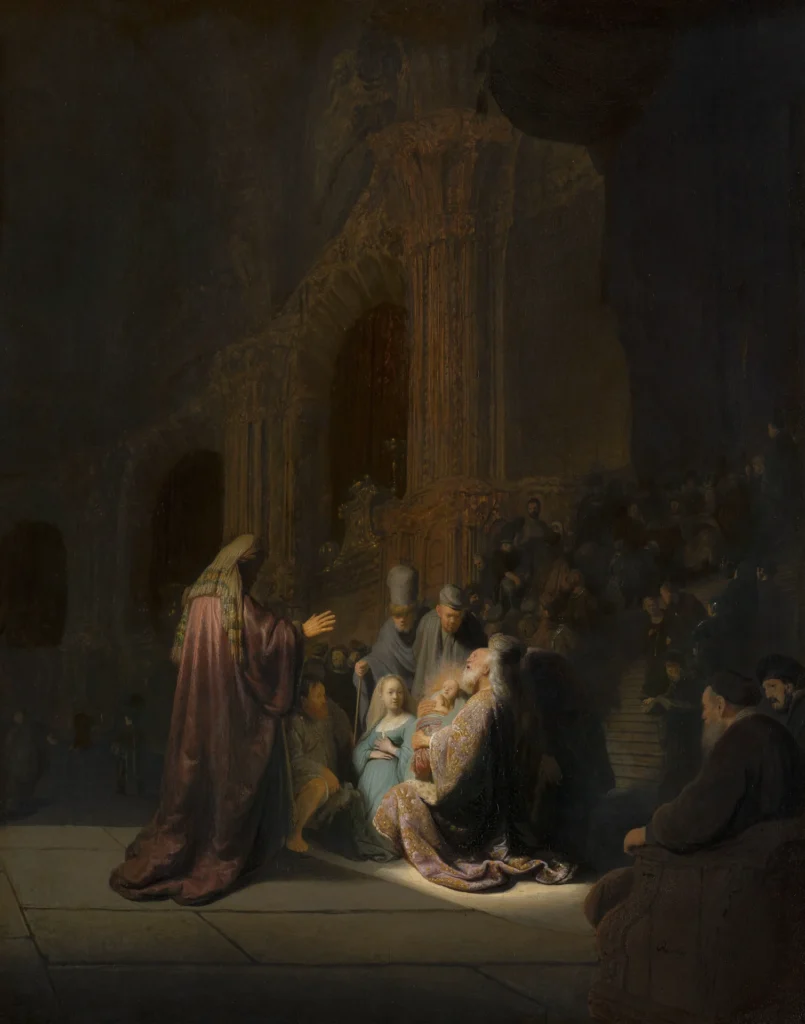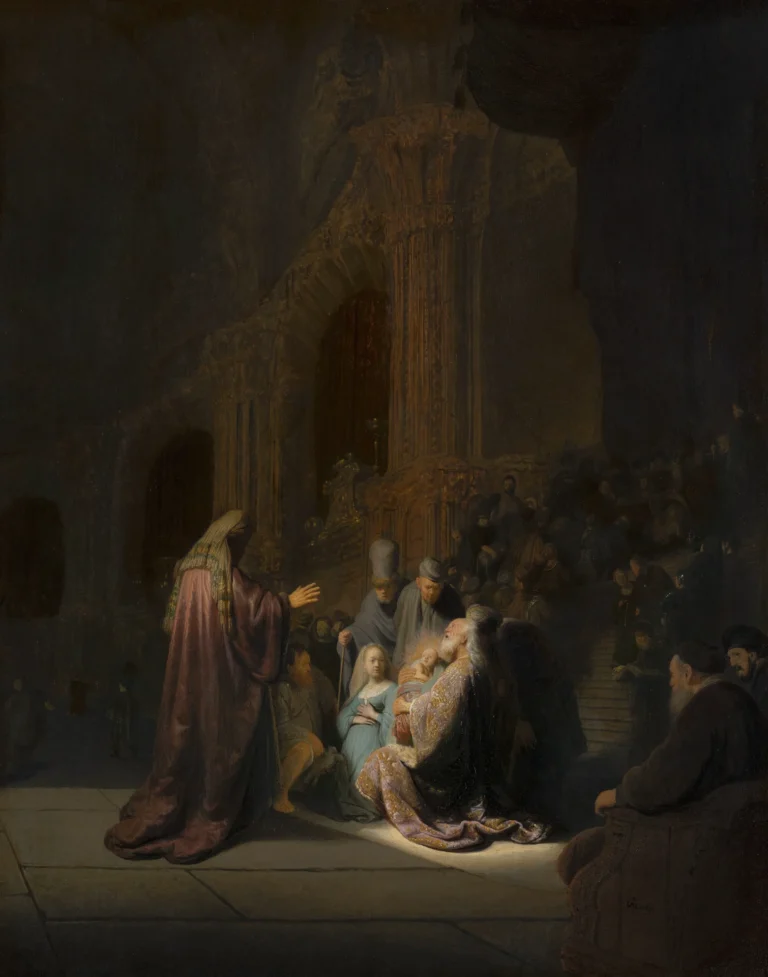Simeon's Song of Praise
The paintings titled Simeon's Song of Praise by Rembrandt van Rijn depict the significant moment from the Gospel of Luke where Simeon recognizes the Messiah in baby Jesus. Created in two distinct periods (1631 and 1669), these artworks showcase Rembrandt’s transformation as an artist. The 1631 version presents a grand scene filled with emotional depth, while the 1669 piece offers a more intimate and simplified depiction, reflecting Rembrandt's late style as he approached the end of his life.
1631, 1669
About the Artwork
Rembrandt's Simeon's Song of Praise serves as an evocative representation of a pivotal biblical moment. In the 1631 version, painted when Rembrandt was just 25, the young artist presents a rich tableau filled with vibrant characters and an atmosphere of reverence. This version exhibits his burgeoning talent, capturing the divine light that illuminates the scene as Simeon acknowledges Christ's significance. By contrast, the 1669 version, created in the last year of Rembrandt's life, reflects a starkly different artistic approach. It reveals a shift towards sentimentality, with a focus on the emotional response of Simeon instead of the ceremonious elements surrounding it. Tragically, this final piece was left unfinished, but it signifies the culmination of a masterful journey through light, shadow, and human emotion.
Did You Know
The scene captures Simeon’s prophetic recognition of Jesus as the Messiah, a significant moment in Christian theology representing the fulfillment of divine promise.
The two versions illustrate a stark contrast in Rembrandt’s style; the youthful exuberance and detail of the 1631 version versus the introspective and simplified nature of the 1669 painting.
The later version of Simeon’s Song of Praise exemplifies Rembrandt’s late works, marked by depth, emotional nuance, and a departure from earlier opulence, resonating with themes of struggle and redemption.
Liked what you see? Add it to your collection.
Enjoyed reading? Share it.
... continued
Rembrandt van Rijn created multiple versions of the scene depicting Simeon's Song of Praise. each with distinct characteristics reflecting different periods of his life and artistic style.
Version from 1631
This version, painted when Rembrandt was 25 years old, is an oil on panel work measuring 60.9 x 47.9 cm. It is housed at the Royal Picture Gallery Mauritshuis in The Hague.
- The painting depicts the scene from the Gospel of Luke (2:25-35) where Simeon, a devout man, recognizes Jesus as the Messiah when Mary and Joseph bring him to the temple.
- Simeon is shown holding the child and praising God, with a divine light emanating from Jesus.
- Mary and Joseph are present, with Joseph holding two pigeons, which were required for the sacrifice. The prophetess Anna is also shown offering a blessing.
- The scene is set before the steps leading to the high priest's throne, and it features Rembrandt's characteristic use of light and shadow.
Version from 1669
Painted in the year of Rembrandt's death, this version is significantly different from the earlier work. It is an oil on canvas painting, measuring 98.5 x 79.5 cm, and is located at the Nationalmuseum in Stockholm.
- This painting is more subdued and intimate, focusing on Simeon and the child Jesus. The elaborate temple setting and crowds from the earlier version are absent.
- Simeon is depicted with his hands pressed together in prayer, and the scene is marked by simplicity and warmth rather than the detailed grandeur of the earlier work.
- The painting was left unfinished at Rembrandt's death, and the woman in the background, possibly representing Mary or Anna, was likely added by another artist from his workshop.










